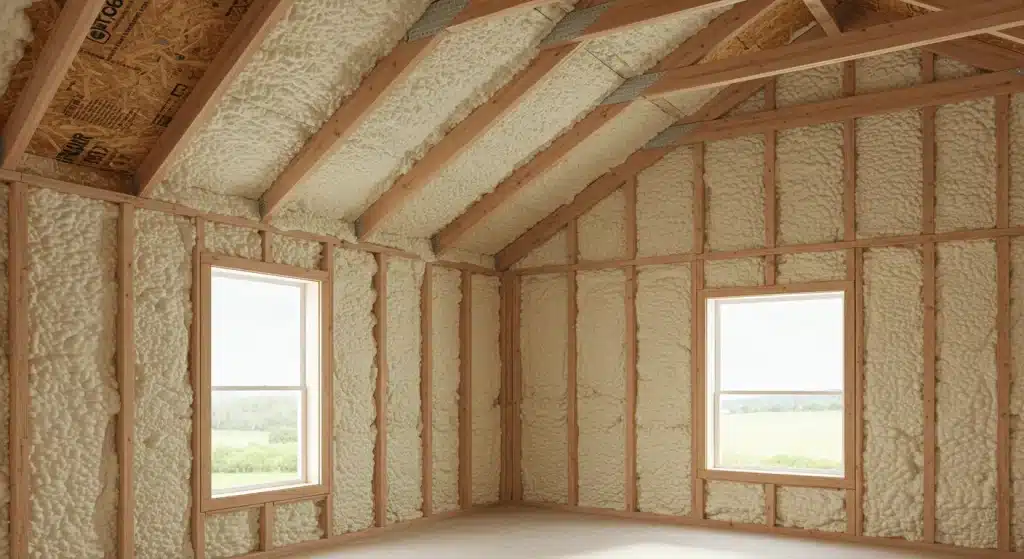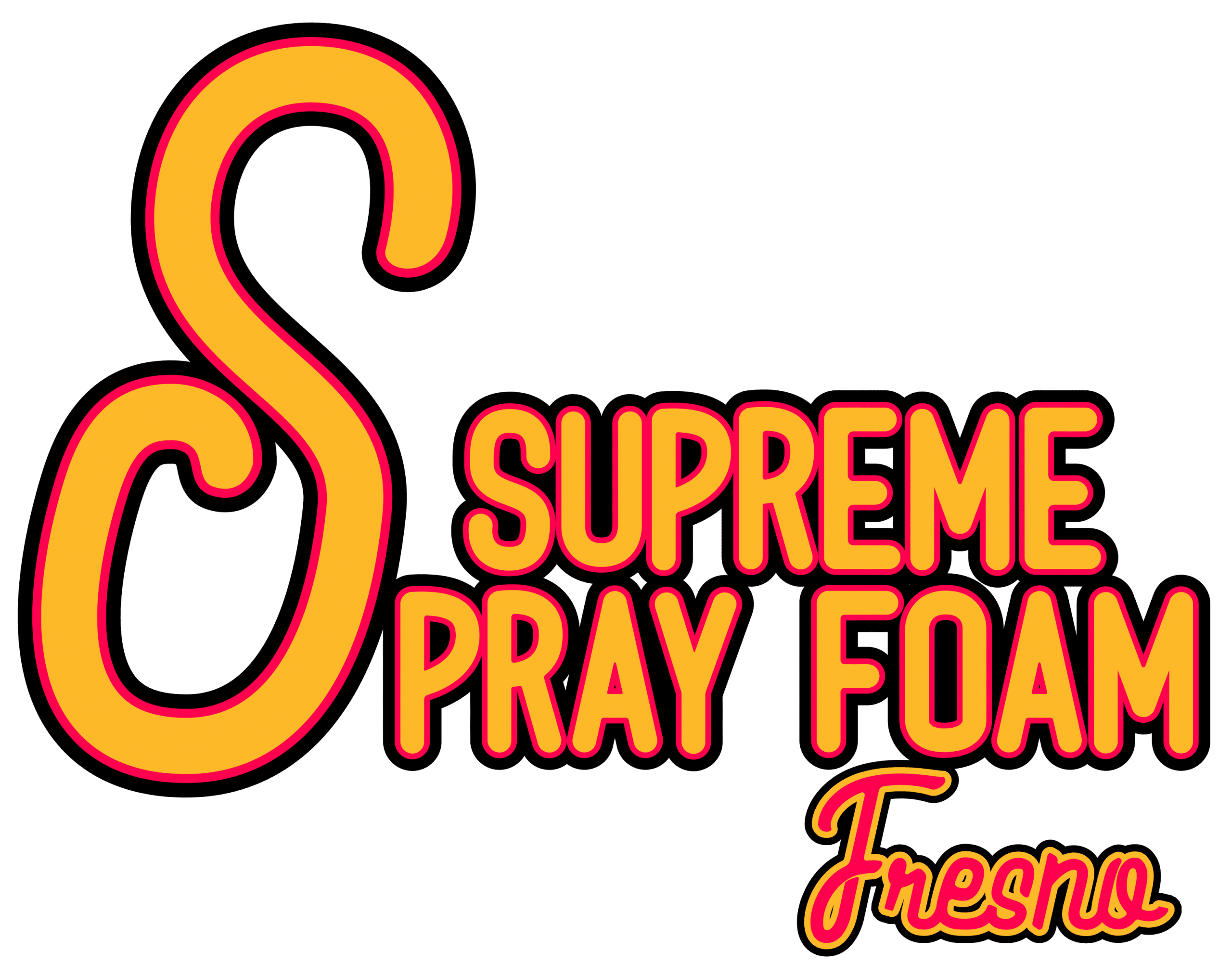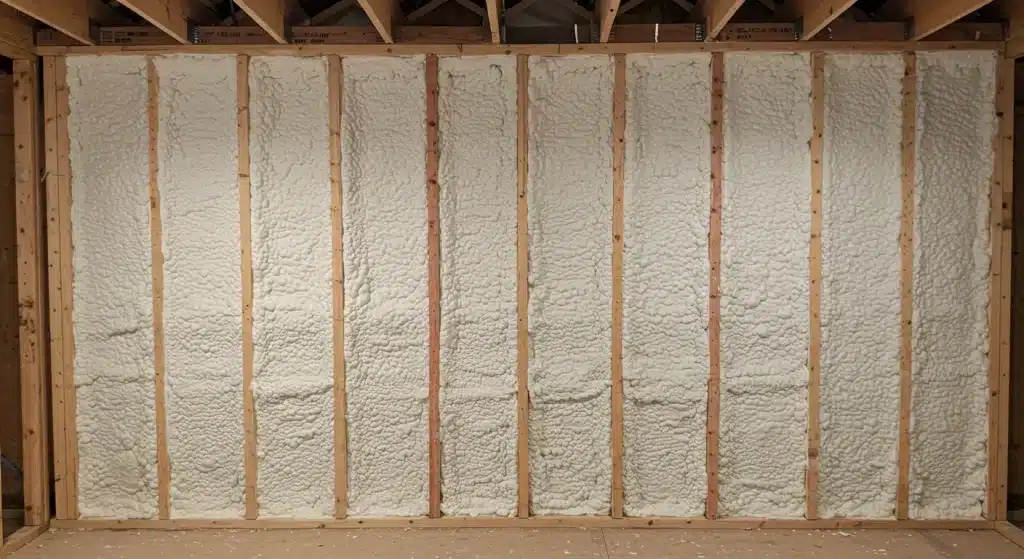Spray foam insulation reduces heat transfer, which stabilizes indoor temperatures and lowers heating and cooling costs in both summer and winter. In Hanford, where summers can exceed 100°F and winters can dip below 40°F, this thermal resistance significantly reduces the energy load on HVAC systems. Homes insulated with spray foam require less energy to maintain comfortable conditions, directly cutting monthly utility expenses.
Unlike traditional insulation materials, spray foam expands on application, sealing air leaks and moisture gaps in attics, crawl spaces, and wall cavities. This air-sealing quality prevents conditioned air from escaping and hot or cold outdoor air from entering. Supreme Spray Foam Fresno uses both open and closed cell formulations to suit the structural and climate needs of Hanford homes. Our direct experience installing these systems confirms energy savings between 15% and 40%, depending on home size, insulation placement, and HVAC usage patterns.
How Spray Foam Improves Energy Efficiency
Spray foam improves thermal efficiency by reducing three key contributors to high energy bills:
- Air infiltration
- Inadequate insulation
- HVAC overuse
Thermal Resistance and Climate Compatibility
Hanford’s Central Valley climate requires insulation that blocks both intense summer heat and winter chill. Spray foam’s high R-value per inch outperforms most conventional materials.
Closed cell foam performs well under high humidity and provides structural support, while open cell foam works well in interior spaces that require breathability.
Material Comparison Table
| Material Type | R-Value per Inch | Air Seal Capability | Moisture Barrier | Suitability for Hanford Homes |
|---|---|---|---|---|
| Open Cell Spray Foam | ~3.5 | High | Low | Ideal for interior walls/attics |
| Closed Cell Spray Foam | ~6.5 | High | High | Best for roofs/crawl spaces |
| Fiberglass Batt | ~2.9 – 3.8 | Low | None | Poor thermal barrier |
| Blown-in Cellulose | ~3.2 – 3.8 | Moderate | Low | Degrades in moisture |
Technical Data for Spray Foam
| Specification | Open Cell Foam | Closed Cell Foam |
|---|---|---|
| R-Value (per inch) | ~3.5 | ~6.5 |
| Expansion Rate | 100x | 30x |
| Density | 0.5 lb/ft³ | 2.0 lb/ft³ |
| Vapor Permeability | High | Low |
| Structural Support | No | Yes |
| Air Leakage Prevention | Yes | Yes |

Local Energy Savings Backed by Data
According to data from the U.S. Department of Energy, properly sealed and insulated homes save up to 20% on heating and cooling costs. PG&E reports Central Valley households using spray foam insulation saw average savings of $450 per year (Source: PG&E Home Energy Audit, 2023).
In practice, Supreme Spray Foam Fresno has documented savings of 30% in Hanford residences that upgraded attic and crawl space insulation. Homes that experienced the most benefit were those previously insulated with aged fiberglass or none at all.
Bonus Tip:
Use spray foam in conjunction with air sealing around ductwork and rim joists to eliminate multiple energy loss points simultaneously.
Things to Consider Before Making a Decision
- R-Value Goals: Determine the total R-value needed based on attic or wall depth.
- Space Use: Choose closed cell for load-bearing or moisture-prone areas.
- Budget: Open cell is more affordable per square foot but may require greater thickness.
- Local Code Requirements: Always check compliance with California Title 24 standards.
- Existing Material: Assess whether current insulation can remain or needs removal.
Bonus Tip:
For retrofits, use thermal imaging to detect energy leaks before selecting spray foam locations.
Relevant Spray Foam Services for Hanford Properties
- Attic Insulation: Blocks extreme attic temperatures from affecting interior spaces.
- Closed Cell Spray Foam Insulation: Provides vapor barrier and thermal resistance in crawl spaces and external walls.
- Open Cell Spray Foam Insulation: Suitable for attic floors and interior partitions where breathability is needed.
- Spray Foam Repairs: Restores compromised or aging foam areas without full replacement.
Common Questions Before Choosing Spray Foam
How long does spray foam insulation last?
It typically lasts 20+ years with minimal degradation.
Can spray foam be added over existing insulation?
Yes, but compatibility should be verified with existing materials.
Does spray foam affect indoor air quality?
After curing, it is inert and does not release harmful emissions.
What areas of the home benefit most?
Attics, crawl spaces, rim joists, and wall cavities.
Get Expert Insulation Guidance
To reduce energy bills in Hanford, consult with Supreme Spray Foam Fresno for a professional assessment based on real application experience. Our team understands how Central Valley weather impacts building performance year-round.
Contact:
- Phone: (559) 545-0800
- Email: [email protected]
Frequently Asked Questions
Is spray foam safe during installation?
Installers wear protective gear due to off-gassing during application. Once cured, the material is non-toxic.
Can spray foam prevent mold?
Closed cell foam resists moisture, which can reduce mold risk in sealed areas.
Does spray foam qualify for tax credits?
It may qualify under certain state or federal energy programs. Confirm eligibility during tax preparation.
How does spray foam compare to radiant barriers?
Spray foam provides both insulation and air sealing; radiant barriers only reflect heat.
Can rodents chew through spray foam?
It deters nesting due to its density, but entry points should still be sealed during installation.


